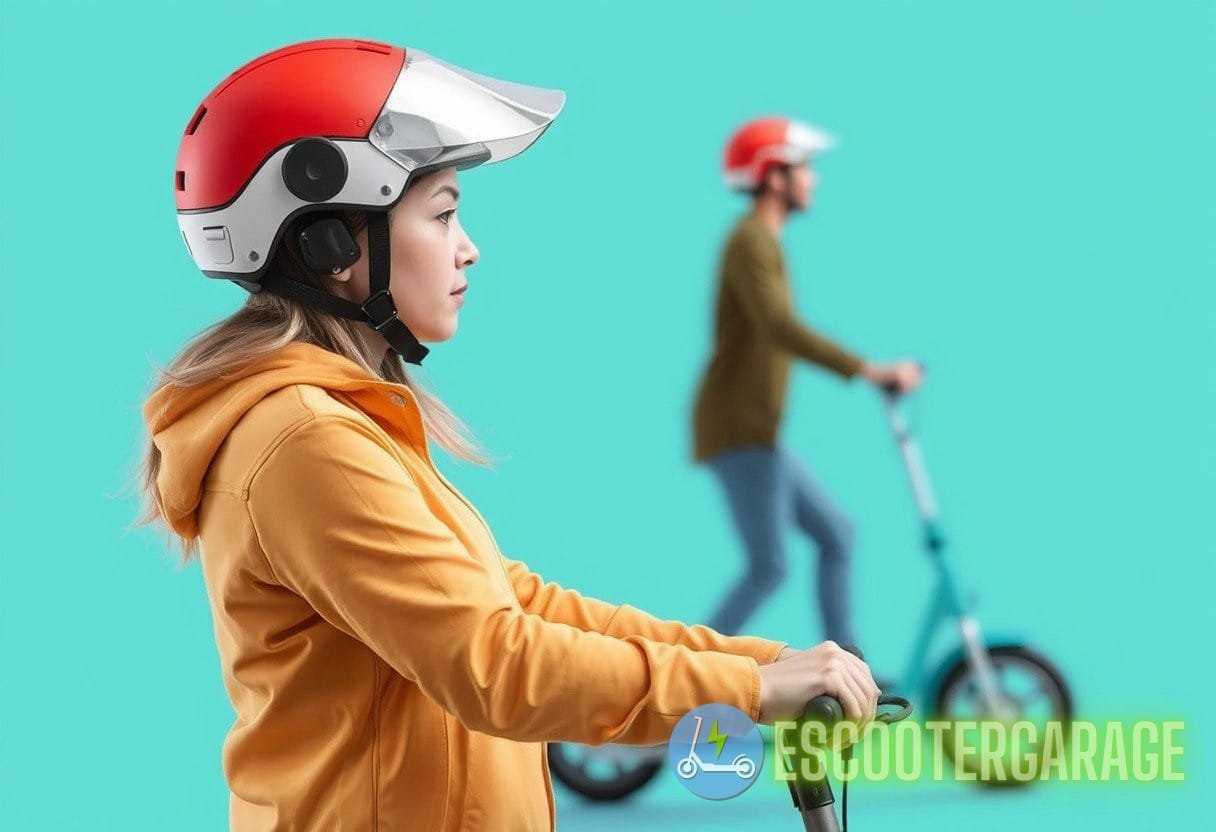Revolutionary Advancements in Helmet Design: Harnessing Hydrodynamic Principles for Unparalleled eScooter Safety
Electronic scooters, or eScooters, have become increasingly popular as a mode of urban transportation. These compact, lightweight vehicles offer a convenient and eco-friendly alternative to traditional transportation methods. However, the rise in eScooter usage has also brought attention to the importance of safety, particularly regarding head protection. In recent years, there have been significant advancements in helmet design, leveraging hydrodynamic principles to provide unparalleled safety for riders. This article explores the revolutionary advancements in helmet design and the incorporation of hydrodynamic principles to enhance eScooter safety.
The Evolution of Helmet Design
Helmets have evolved significantly over the years to meet the growing demands of safety-conscious individuals. Early helmet designs were focused primarily on providing impact protection, with a rigid shell and padding to absorb shock. While these helmets were effective to a certain extent, they offered limited protection against rotational and angular forces that can occur during accidents.
Recognizing the need for improved helmet design, researchers and engineers turned to hydrodynamics for inspiration. Hydrodynamics, the study of fluid in motion, enables the design of streamlined structures that reduce drag and turbulence. By applying these principles to helmet design, engineers have been able to create helmets that offer superior protection, comfort, and aerodynamics.
The Benefits of Hydrodynamic Helmet Design
The incorporation of hydrodynamic principles into helmet design has led to a range of benefits for eScooter riders:
- Optimized airflow: Hydrodynamic helmet designs are specifically engineered to minimize drag and turbulence, allowing for greater efficiency and improved control while riding an eScooter.
- Enhanced cooling: By carefully designing the air vents and channels, hydrodynamic helmets provide superior airflow, reducing heat buildup and promoting cooling during extended rides.
- Reduced wind noise: Hydrodynamic helmets are designed to minimize wind noise, resulting in a quieter and more enjoyable riding experience.
- Improved stability: The streamlined shape of hydrodynamic helmets reduces the risk of helmet movement at high speeds, ensuring a secure fit and improved stability.
Integration of Hydrodynamic Principles in Helmet Design
Incorporating hydrodynamic principles into helmet design requires a combination of computational fluid dynamics (CFD) analysis, wind tunnel testing, and advanced materials engineering. Manufacturers use CFD software to simulate and analyze the flow of air around the helmet, optimizing its shape to minimize drag and turbulence.
Wind tunnel testing allows designers to validate the CFD models and fine-tune the helmet’s aerodynamic properties. By studying the airflow patterns and pressure distribution, engineers can identify areas of improvement and refine the helmet’s shape for optimal performance.
Advanced materials engineering plays a crucial role in hydrodynamic helmet design. Lightweight, yet strong materials, such as carbon fiber composites, are utilized in the construction of the helmet to ensure structural integrity while minimizing weight. These materials, combined with the hydrodynamic design, result in a helmet that balances protection, comfort, and aerodynamics.

The Hydrohelmet: A Cutting-Edge Innovation
The hydrohelmet represents the pinnacle of hydrodynamic helmet design for eScooter safety. It incorporates all the advancements mentioned above and introduces several groundbreaking features:
- Multi-impact protection: The hydrohelmet is engineered to provide multi-impact protection, reducing the risk of injury in the event of successive impacts. This is achieved through advanced materials and smart impact absorption systems built into the helmet.
- Intelligent ventilation system: The hydrohelmet’s ventilation system automatically adjusts the airflow based on the rider’s speed and environmental conditions. This ensures optimal cooling and comfort while maintaining the helmet’s aerodynamic performance.
- Integrated communication technology: The hydrohelmet integrates seamlessly with the rider’s smartphone, allowing for hands-free communication, navigation, and access to ride-sharing apps. This helps riders stay connected while keeping their attention on the road.
- Smart sensors for monitoring: Embedded sensors in the hydrohelmet continuously monitor various parameters, such as impact forces, temperature, and humidity. This data can be used to provide real-time feedback to the rider and assist in accident analysis and prevention.
The hydrohelmet represents a significant breakthrough in helmet design, harnessing the power of hydrodynamics and cutting-edge technology to maximize safety and enhance the overall riding experience for eScooter users.
Conclusion
The revolutionary advancements in helmet design have transformed the way we think about head protection for eScooter riders. By applying hydrodynamic principles, engineers have been able to create helmets that offer unparalleled safety, comfort, and aerodynamics. The hydrohelmet, incorporating multi-impact protection, intelligent ventilation systems, integrated communication technology, and smart sensors, represents the cutting edge of helmet design for eScooter safety.
As eScooter usage continues to increase, so too must our commitment to safety. Investing in a high-quality helmet, such as the hydrohelmet, is essential for protecting riders and reducing the risk of head injuries. With the advancements in helmet design driven by hydrodynamic principles, riders can enjoy the many benefits of eScooter transportation with peace of mind.
Internal Links:
- Revolutionizing eScooter Safety: How Nanotechnology Revolutionizes Helmet Design
- Stay Safe on Your eScooter: The Importance of eScooter Protective Gear
External Link:
For more information on hydrodynamics, please visit https://en.wikipedia.org/wiki/Hydrodynamics.



